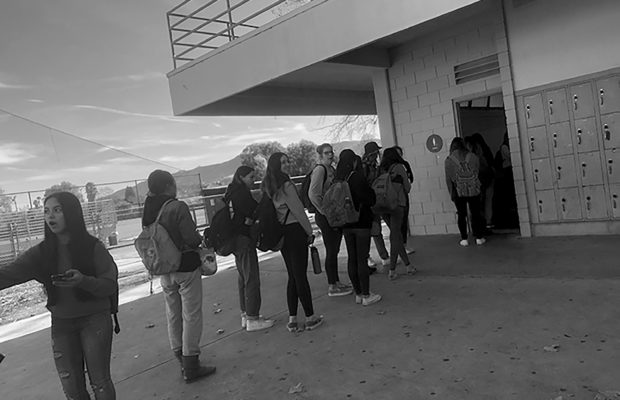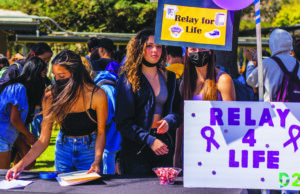Work with students to refine policy

As of Jan. 21, 2020, NPHS school administration has implemented a new bathroom policy: only one student can be in the restroom at a time during class, small pink slips must be written for every student who uses the bathroom and only the D building bathrooms will be open during class time. It restricts students from leaving class to go to the bathroom in the first or last 15 minutes of class and a campus supervisor is posted outside the bathroom to enforce the policy, signing pink slips and monitoring who enters and leaves the bathrooms. It was initiated by Principal Steve Lepire and the assistant administrators in efforts to address the vandalism and illegal activity that occurs in the bathrooms.
While the policy has enraged the student body, it is understandable why it has gone into effect. Most students neglect to identify the root of the issue: the small percentage of students who abuse their bathroom rights by doing drugs and vandalizing the bathroom walls.
Recently, the custodial staff has had to face students graffitiing the doors and walls using pen, toilet paper and even their own feces. In addition, students have been flushing miscellaneous objects down the toilets, including apples, shoes, vapes and bags of sand which the staff has spent thousands of dollars fixing.
Though the new system does address a relevant problem, the policy and the implementation of it has flaws. As a school of roughly 2,500 students, the “one student only” rule for bathroom use has already created excessively long lines. If the NPHS administration want to keep this rule, bathrooms in every building should be made available. According to the California Department of Education, there should be one lavatory for every 40 students attending the school, meaning that if there are approximately 2,500 students at NPHS, over 60 lavatories need to be available. According to Article 10 Section 35292.5 of the California Education Code, “the school shall keep a sufficient number of restrooms open during school hours when pupils are in classes.” To have a singular bathroom open during class hours in a school with such a large student body is unreasonable. Even if campus supervisors let more than one student go into the bathroom at a time, having just one location is inconvenient and could end up causing students to miss more instructional time than necessary.
The school encourages students to go to the bathroom during their breaks; however, with the long bathroom lines at nutrition and lunch, sometimes it is impossible to do so. Some days, a student could get in line to go to the bathroom at the beginning of nutrition and be halfway through the line by the time the break has ended. Going during class, while not ideal, can be necessary. The bathrooms always need to be available for students who need it.
Again, there is a serious need to address the illegal activities that go on in the bathroom and we understand that the policy is a work in progress. We think that this policy should serve as a guideline, not a strict rule. In the coming weeks, students should be allowed to openly provide feedback- whether it be through a forum or another setting- and administration needs to be receptive. We hope that both students and administration can work together so that the problem is addressed but students are still able to use the bathroom when necessary.



